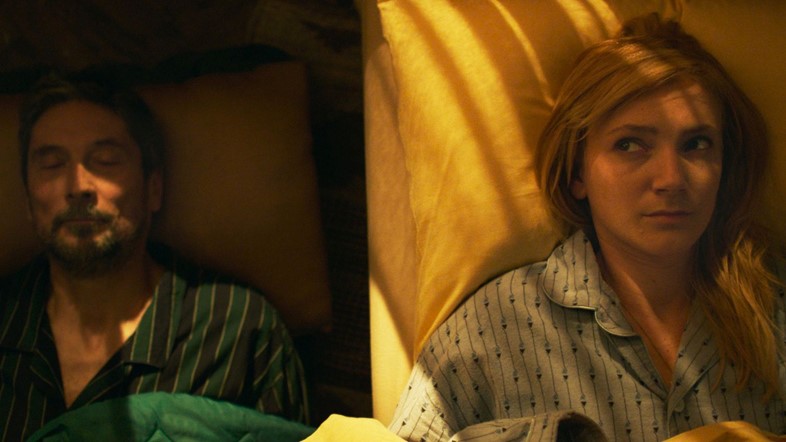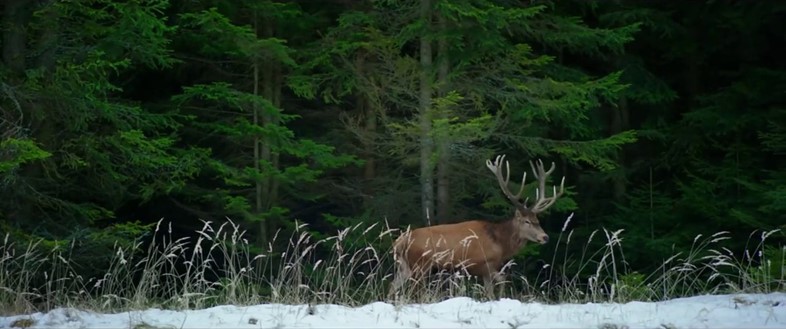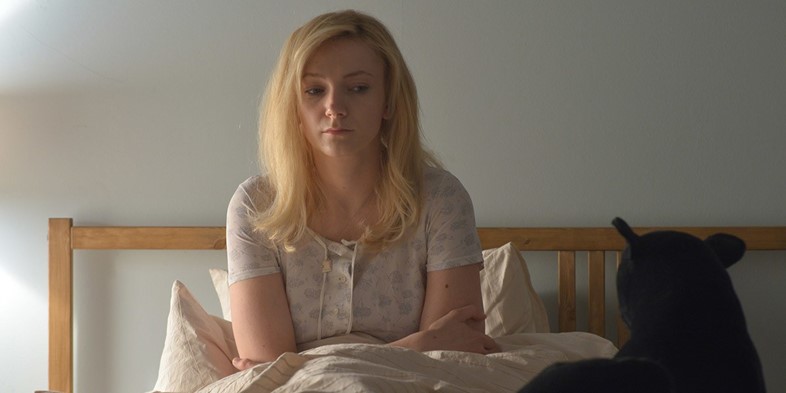We speak with Hungarian director Ildiko Enyedi about her Berlinale-winning new film, On Body and Soul, a tale of shared dreams and unlikely connections
If a love story set in a slaughterhouse sounds like the premise for a thoroughly unsavoury cinematic experience, you wouldn’t be entirely wrong. Within the first few minutes of On Body and Soul, the new film from Hungarian writer-director Ildiko Enyedi of My 20th Century fame, viewers are confronted by a gruesome, efficiently conducted bloodbath as a cow is slain and prepared for the conveyor belt. But it makes for a particularly affecting backdrop to the tale of two company employees: the gruff, but sparkling-eyed Endre (Géza Morcsányi), the abattoir’s middle-aged director, and Maria (Alexandra Borbély), the new hygiene inspector, whose social awkwardness – likely a form of autism, although this is never mentioned directly – translates as blunt emotional detachment, in spite of her gentle nature. Both are lonely souls, living an isolated existence; for the 30-something-year-old Maria this is the life she’s always known, whereas Endre’s current state seems linked to the loss of use of one of his arms – he has a daughter from a previous relationship and a long history with women. When, during a compulsory psychological examination at work, they discover they have the same dream each night – meeting in the guise of a stag and a doe and sharing tender encounters in an icy forest – they find themselves compelled to explore their subconscious connection in the waking world. What ensues is by turns surreal, darkly comic and deeply stirring.

“It’s hard for me to remember exactly how it played out, because it happened really quickly,” 61-year-old Enyedi tells AnOther over the phone of the idea behind the film. “Somehow this script wrote itself in a three and a half-week rush. The structural concept was simply shared dreams and the characters’ discover of this very unsettling, wonderful and frightening thing. Other than that I’m unable to explain how it came into my mind.” Her decision to set and shoot the film in a slaughterhouse took a little more consideration. “I’ll explain it as I finally explained it to myself: the two very interesting, closed people in this love story are frozen by the everyday cruelty of their normal life. This happens in lots of workplaces, to people working in arms factories, for instance, or soldiers, but because my characters are exploring very elementary instincts and longings, I wanted to show this form of cruelty in an equally elementary form, happening in a very normal, neat, cheerful workplace.”

Enyedi visited Hungary’s three principle abattoirs to find her location, opting for the one she felt treated both the animals and their employees with the most compassion. “The director, like Endre’s character, carried out very careful interviews and kept an eye on his workers’ mental states, and the animals were cared for with real humanity, almost fraternity,” she says. Her search for a leading lady, however, proved a harder task. “It was very difficult because Maria is a very vulnerable woman, but at the same time she’s very powerful; she has a relentless consistency of the character that is quite unsettling for the people around her. I was casting for five months and I saw lots of actresses who could do either vulnerable or strong but not both.” Interestingly, the director had already found her Maria unwittingly, having written the smaller role of the company psychologist with Borbély in mind. “Alexandra kept coming into auditions to play opposite the potential Marias, but somehow I couldn’t get her out of my mind for the part instead, although she’s a very different character.” When Enyedi finally offered Borbély the role, her instincts were confirmed. “We spent a month and a half finding Alexandra’s inner Maria,” she says, “and by the time we were on set I barely had to say anything, she was Maria.”

The film is very visually powerful, its palette cold and clinical to mirror the lives of its protagonists, but it is purposefully void of style. “I’ve never made such a sensitive film,” Enyedi says of this, her eighth feature. “Just as Maria is very sensitive and vulnerable, the film required a particular exactness; the tiniest of differences could destroy the meaning of a scene completely.” Her main objective, she explains, was to allow Maria and Endre’s story, and their feelings towards each other, speak the loudest. “Take Endre’s shirt,” she says. “You shouldn’t really realise that he is wearing one. It had to be grey, meaningless, outside of trends, and in a very discreet way, it needed to attract attention to his face, his eyes, his aura. I stole this way of thinking from Clint Eastwood in Gran Torino: up until this last moment, he is a grey, grumpy old man but at the end of the film he emerges like a western hero. Every tiny aesthetic decision had a psychological reasoning behind it like this.”

Another film that inspired her, she says was Wong Kar-wai’s masterful romantic drama In The Mood For Love. “It was the only film I showed to my DOP because, although I knew we had to find very different tools to express it, I wanted to capture that kind of hidden energy and passion in a simple, everyday surrounding.” And she certainly succeeds, the result of such thorough attention to detail making for truly life-affirming viewing. The story of two very specific characters finding love in the most unlikely of places could easily feel worlds away from our own, and yet the film is joyously universal in its study of the human need for connection in an increasingly disconnected, screen-gazing age. “It has lots of different themes and moods, but my secret wish is that people come out of the cinema smiling,” says Enyedi, “and when they do it’s so rewarding.”

On Body and Soul is in UK cinemas now.
